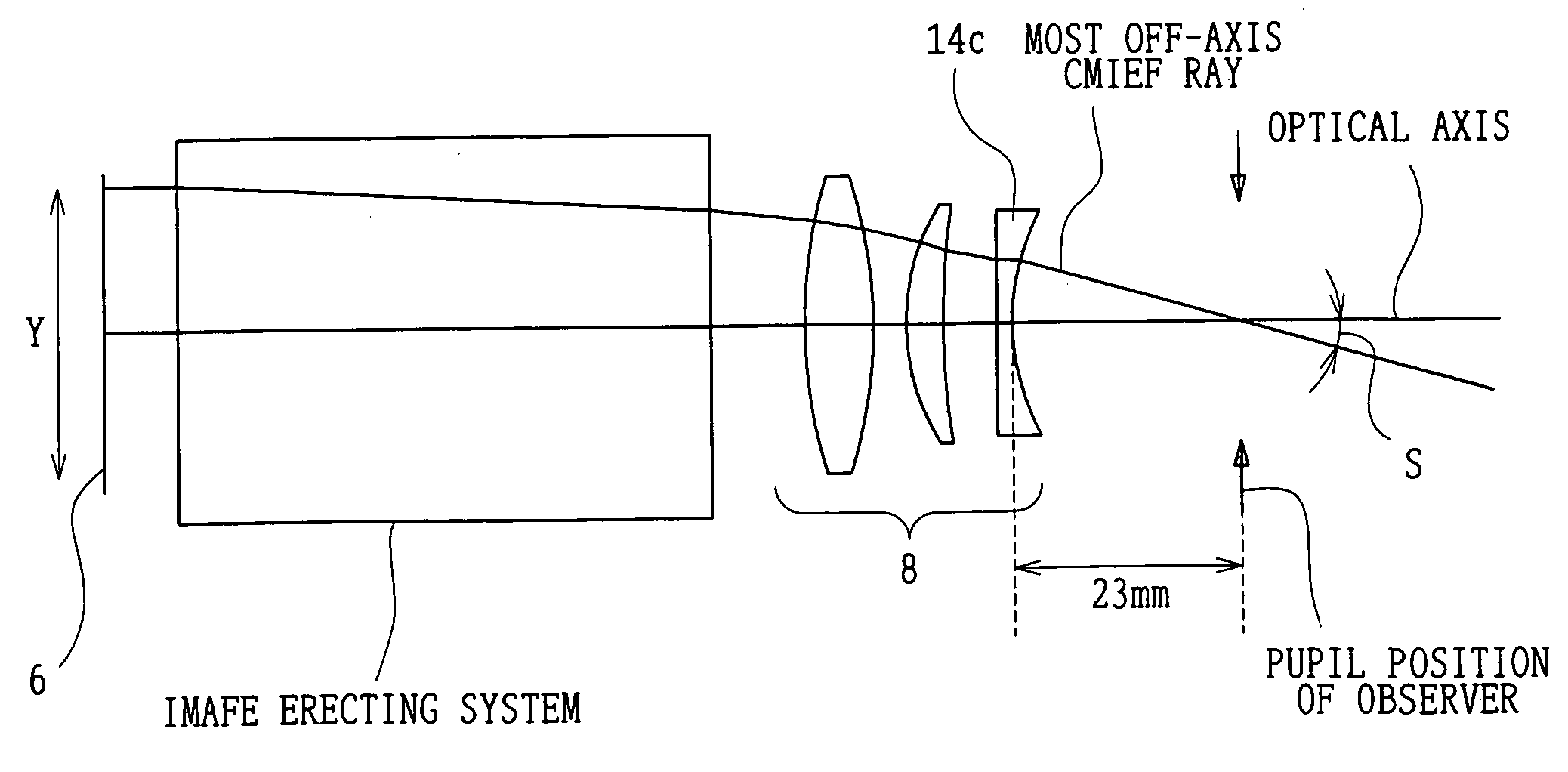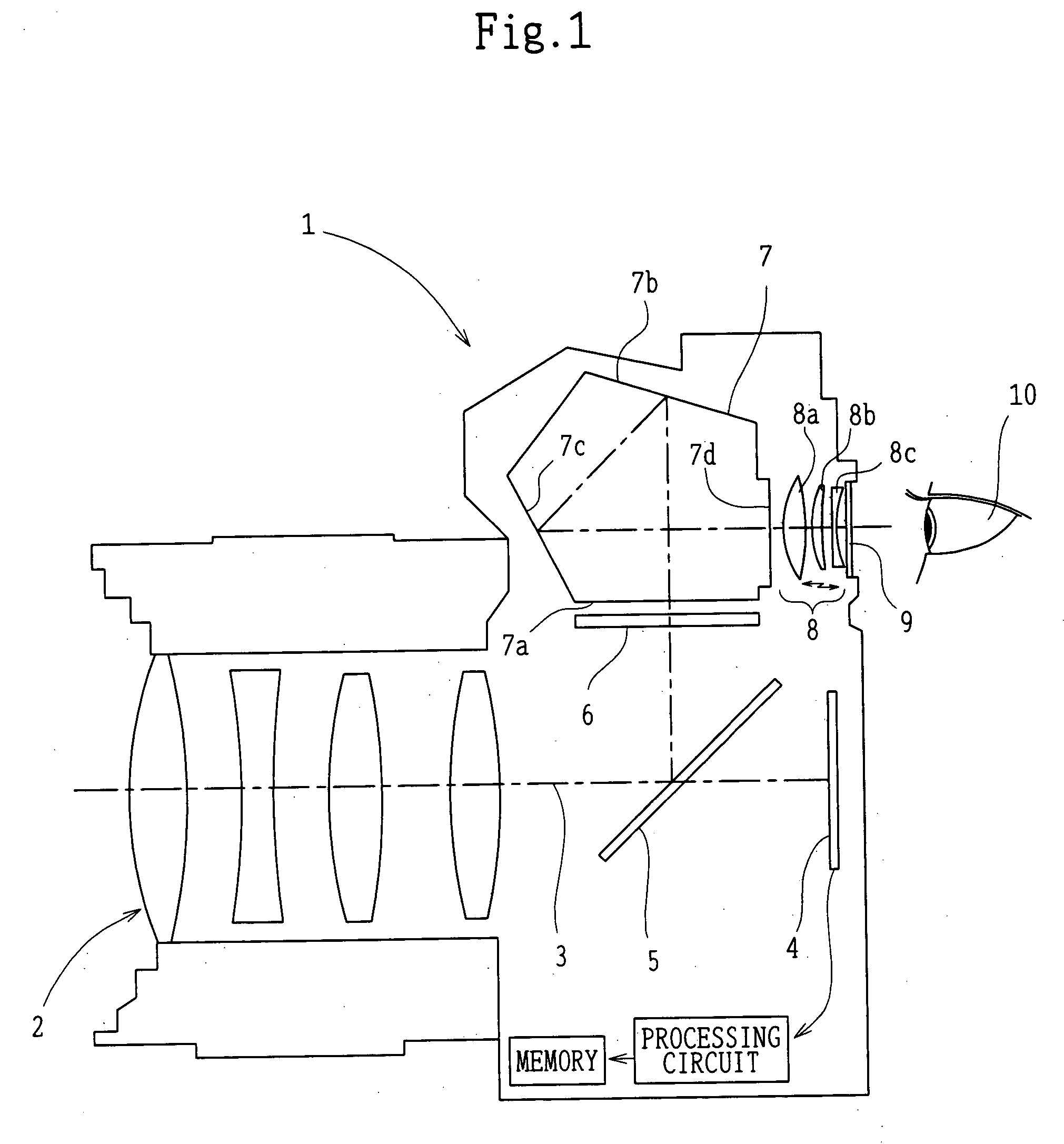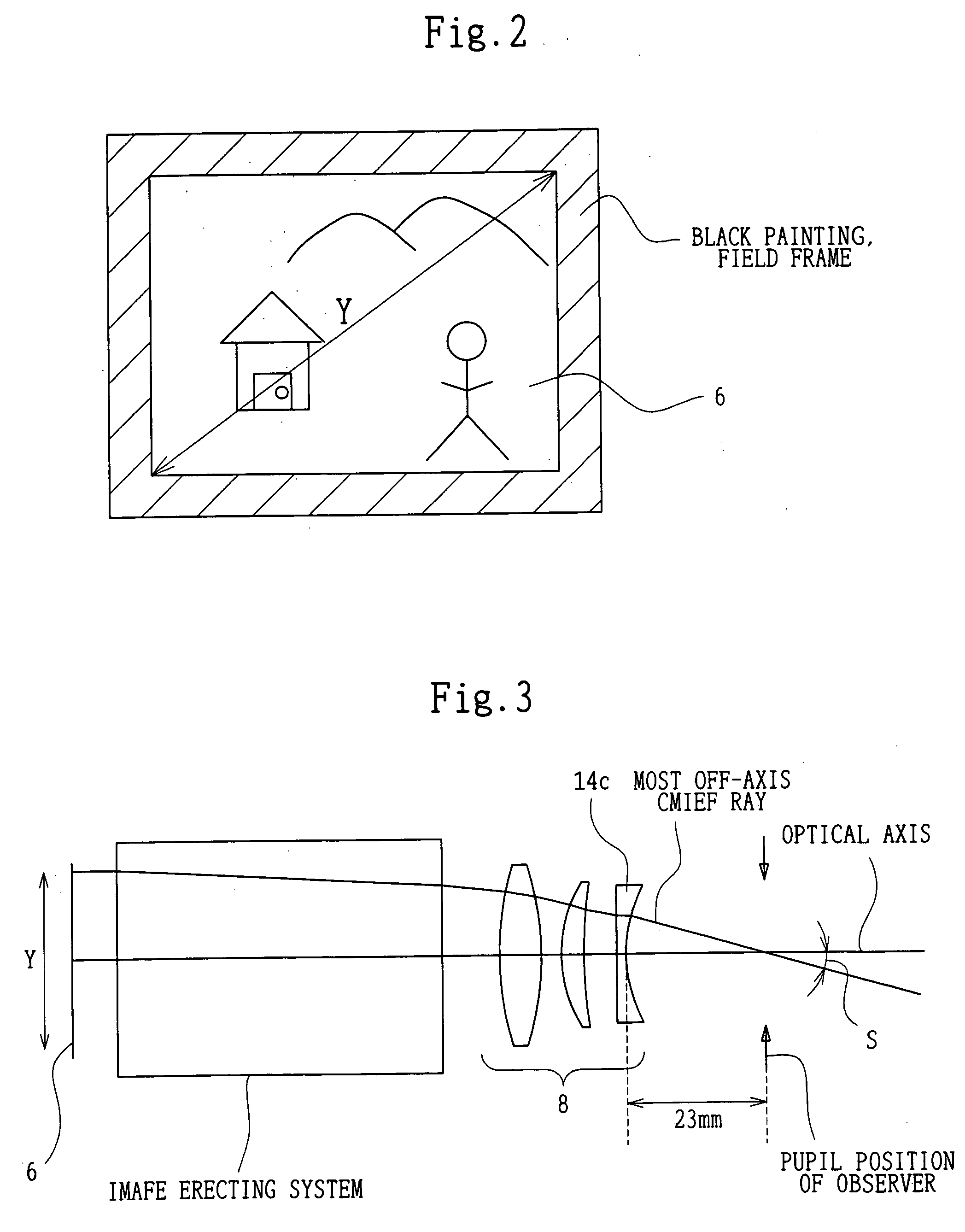Camera provided with eyepiece
- Summary
- Abstract
- Description
- Claims
- Application Information
AI Technical Summary
Problems solved by technology
Method used
Image
Examples
first embodiment
FIG. 4 shows an optical arrangement, at a diopter of 0 m−1, in the first embodiment of a camera provided with the eyepiece according to the present invention. For convenience of illustration, a plane-parallel plate-like member in FIG. 4 is shown by developing the pentagonal roof prism.
FIGS. 5A-5D, 6A-6D, and 7A-7D show aberration characteristics in the first embodiment. Also, the diopter (m−1) is taken as the axis of abscissas relative to spherical aberration and curvature of field, and the angle (minute) is taken as the axis of abscissas relative to chromatic aberration of magnification.
The first embodiment has the pentagonal roof prism 7 and the eyepiece system 8. The eyepiece system 8 includes, in order from the object side, a first lens component 8a with positive refracting power which is a biconvex lens, a second lens component 8b with positive refracting power which is a meniscus lens with a convex surface directed toward the object side, and a third lens component 8c with ...
second embodiment
FIG. 8 shows an optical arrangement, at a diopter of 0 m−1, in the second embodiment of the eyepiece system according to the present invention. For convenience of illustration, a plane-parallel plate-like member in FIG. 8 is shown by developing the pentagonal roof prism.
FIGS. 9A-9D, 10A-10D, and 11A-11D show aberration characteristics in the second embodiment. Also, the diopter (m−1) is taken as the axis of abscissas relative to spherical aberration and curvature of field, and the angle (minute) is taken as the axis of abscissas relative to chromatic aberration of magnification.
The second embodiment has the pentagonal roof prism 7 and the eyepiece system 8. The eyepiece system 8 includes, in order from the object side, the first lens component 8a with positive refracting power which is a biconvex lens, the second lens component 8b with positive refracting power which is a meniscus lens with a convex surface directed toward the object side, and the third lens component 8c with neg...
third embodiment
FIG. 12 shows an optical arrangement, at a diopter of 0 m−1, in the third embodiment of the eyepiece system according to the present invention. For convenience of illustration, a plane-parallel plate-like member in FIG. 12 is shown by developing the pentagonal roof prism.
FIGS. 13A-13D, 14A-14D, and 15A-15D show aberration characteristics in the third embodiment. Also, the diopter (m−1) is taken as the axis of abscissas relative to spherical aberration and curvature of field, and the angle (minute) is taken as the axis of abscissas relative to chromatic aberration of magnification.
The third embodiment has the pentagonal roof prism 7 and the eyepiece system 8. The eyepiece system 8 includes, in order from the object side, the first lens component 8a with positive refracting power which is a biconvex lens, the second lens component 8b with positive refracting power which is a cemented lens of a biconvex lens element 8b1 and a concave meniscus lens element 8b2, with a convex surface ...
PUM
 Login to view more
Login to view more Abstract
Description
Claims
Application Information
 Login to view more
Login to view more - R&D Engineer
- R&D Manager
- IP Professional
- Industry Leading Data Capabilities
- Powerful AI technology
- Patent DNA Extraction
Browse by: Latest US Patents, China's latest patents, Technical Efficacy Thesaurus, Application Domain, Technology Topic.
© 2024 PatSnap. All rights reserved.Legal|Privacy policy|Modern Slavery Act Transparency Statement|Sitemap



